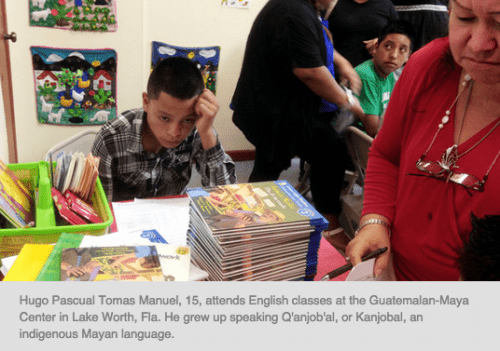7 On Your Side Investigates: Long Island district struggles to serve surge in migrant students, ABC7 New York, March 29, 2019
RIVERHEAD, Long Island (WABC) — For Mrs. Pamela Joyce, a school counselor in the Riverhead Central School District, each day brings more to do than she could ever fit into 24 hours.
She describes working weekends, staying late, and coming to school early, in the hopes of reaching the hundreds of kids she serves between the district’s high school and middle school.
Joyce is the district’s only bilingual school counselor for the high school and middle school. She’s also the only counselor the district has added in the last decade despite a quickly climbing student population.
She splits her time between both campuses and often encounters kids with little to no understanding of the U.S. education system.
“To be the kid in the foreign country who didn’t have shoes, who moved here and their life is so different, every day there is something to catch up on,” Joyce said.
Joyce serves students considered English language learners.
Eyewitness News attended a group session as Joyce prepared 8th graders for high school.
Joyce said there are many kids she just can’t reach because she doesn’t have the time.
“I actually have four new students to schedule this week,” Joyce said, “so they don’t stop coming.”
“We have not kept up,” added Superintendent Dr. Aurelia Henriquez who said hospitalizations for mental health issues and other behavioral concerns have climbed as the district struggles to reach its kids.
“We can’t implement the programs and the staff that we know our children and our district needs,” Henriquez said.
The district has one of the highest rates of agricultural migrant students in New York.
In Riverhead, the number of kids who don’t have a good grasp of English has more than doubled over the past five years, outpacing the state and county averages according to New York State Education Department enrollment data.
However, state funding hasn’t kept up with the district’s increasing needs.
Instead, the state has shortchanged Riverhead by nearly $25 million in funding known as Foundation Aid in an effort to save money.
The New York legislature created the Foundation Aid formula over a decade ago in an effort to increase equity in schools across New York by sending more money to needy districts, but it has repeatedly failed to entirely follow that formula or fully fund it in an effort to save money, leaving many districts with a fraction of their needs. (Continues)














